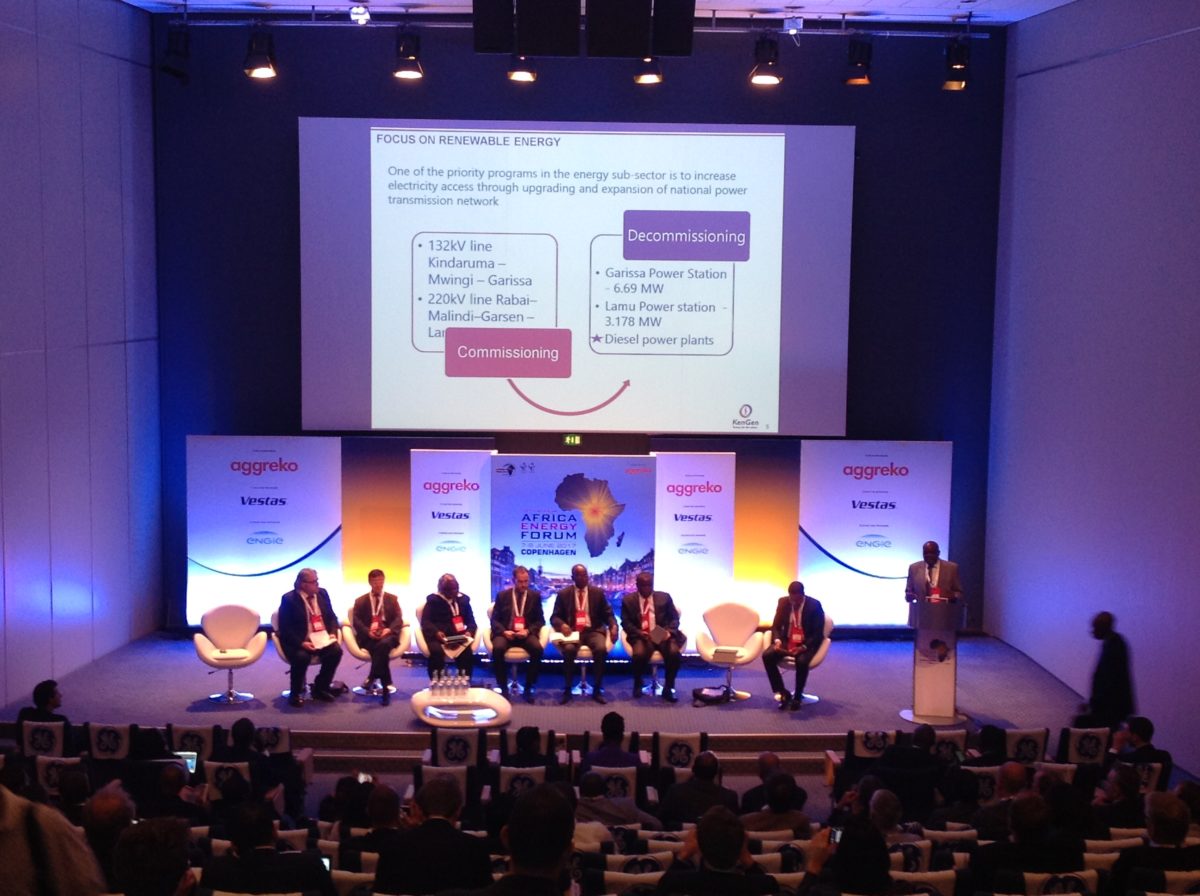Kenya was one of the most hopeful cases discussed at the recent Africa Energy Forum (AEF) that took place in Copenhagen, Denmark.
There are several reasons for this optimism. Firstly, the country appears to have an electricity tariff that reflects the real costs of electricity generation and transportation. There are a few situations where the state would subsidise the electricity sector, for example at a time of drought, however this happens only for a short period.
Secondly, Kenya already relies predominantly on renewable electricity generation, mainly hydro and geothermal power. Moreover, it prepares to decommission existing fossil fuel-based power plans, and replace them with new renewable energy plants, mostly geothermal facilities. In fact, newly added geothermal units have helped Kenya to reduce the cost of electricity generation, and this has been passed to consumers through a reduced electricity tariff, Joshua Choge, chairman of Kenya's Electricity Generation Company (Kengen), told the Forum.
Isaac Kiva, director for renewable energy at Kenya’s ministry of energy and petroleum, told last year's Africa Energy Forum in London that Kenya had achieved electricity connection to 54% of its population, but it was aiming 70% and 100% connectivity for the years 2017 and 2020 respectively.
Kenya is on track to meet these targets. At this year's AEF in Copenhagen, Peter Mungai Kinuthia, general manager for business strategy at Kenya's Power and Lightning Company (KPLC), a company that transports and sells electricity, said that it has now achieved 69% electrification. Another 11% of the country's electrification will come via expansion of the grid, while 20% of our population will need to be offered electricity via offgrid hybrid solutions combining solar, wind and storage technologies, added Kinuthia.
Solar PV policy and projects
Not that solar PV technology cannot offer solutions for the grid-connected sector.
Kenya introduced a feed-in tariff (FIT) policy for solar PV systems connected to the grid in 2008, and the tariffs were revised in 2010 and 2012. The tariffs were also supposed to be revised in 2015, but this didn't happen. Kinuthia argued that the reason for this is that the government is considering a transition to an auction-based regime, due to the rapid decrease of PV costs.
Popular content
Nevertheless, Kenya's energy regulator confirmed at the Forum that it has approved four solar PV projects, each project having 40 MW of capacity.
Dr Frederick Nyang, director of economic regulation at Kenya's Energy Regulatory Commission, told pv magazine that these projects will receive a tariff of US$0.12/kWh for the next 20 years according to the last revision of the FIT law in 2012.
Furthermore, Nyang said, all four PV projects will need to be electrified by 2019, however some developers have told the regulator that they will complete the installation even earlier, by the end of 2018.
The four developers are: Eldosol, Radiant, Alten and Malindi Solar. They are all joint ventures between local and international firms.
Correction: This article was corrected at 0:00 CET on June 20. The former article stated that 120 MW was under development, with four projects each 30 MW in capacity. This figure has been updated to 160 MW, with four projects each 40 MW in capacity.
This content is protected by copyright and may not be reused. If you want to cooperate with us and would like to reuse some of our content, please contact: editors@pv-magazine.com.


2 comments
By submitting this form you agree to pv magazine using your data for the purposes of publishing your comment.
Your personal data will only be disclosed or otherwise transmitted to third parties for the purposes of spam filtering or if this is necessary for technical maintenance of the website. Any other transfer to third parties will not take place unless this is justified on the basis of applicable data protection regulations or if pv magazine is legally obliged to do so.
You may revoke this consent at any time with effect for the future, in which case your personal data will be deleted immediately. Otherwise, your data will be deleted if pv magazine has processed your request or the purpose of data storage is fulfilled.
Further information on data privacy can be found in our Data Protection Policy.